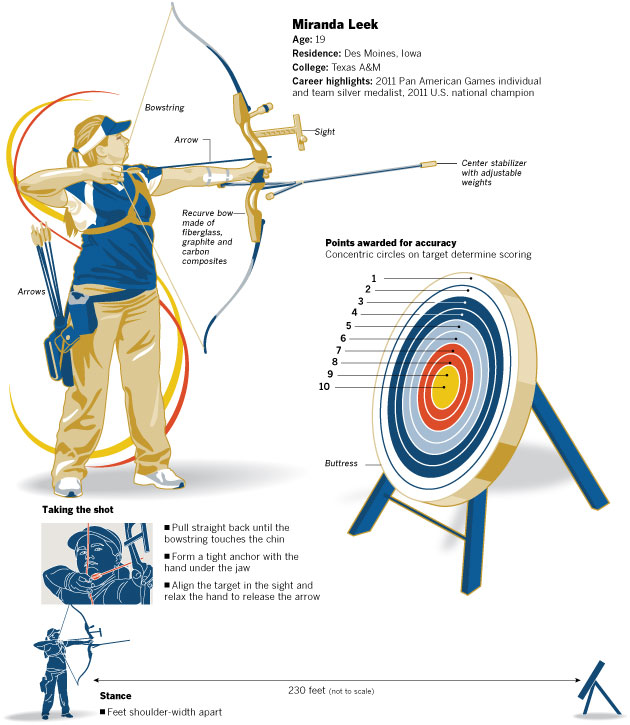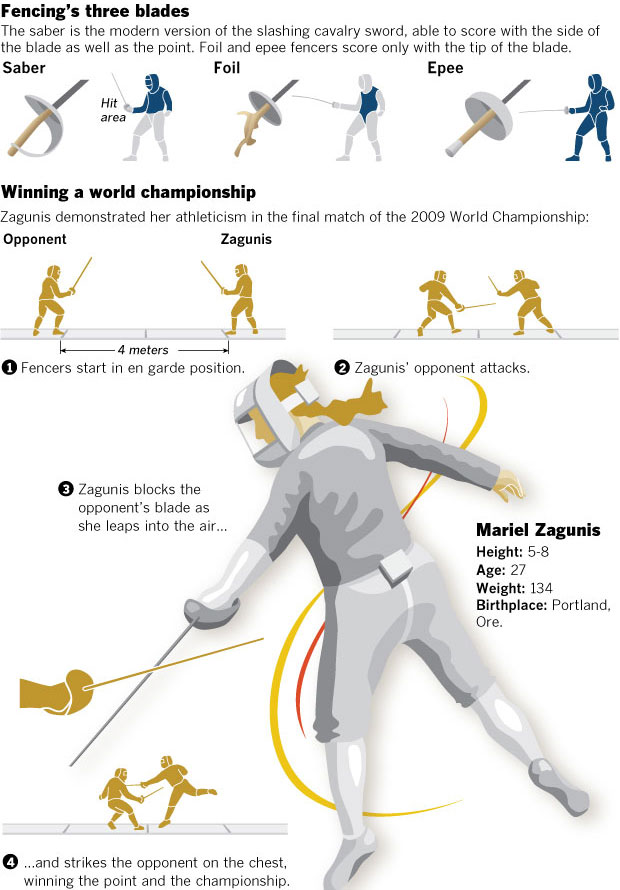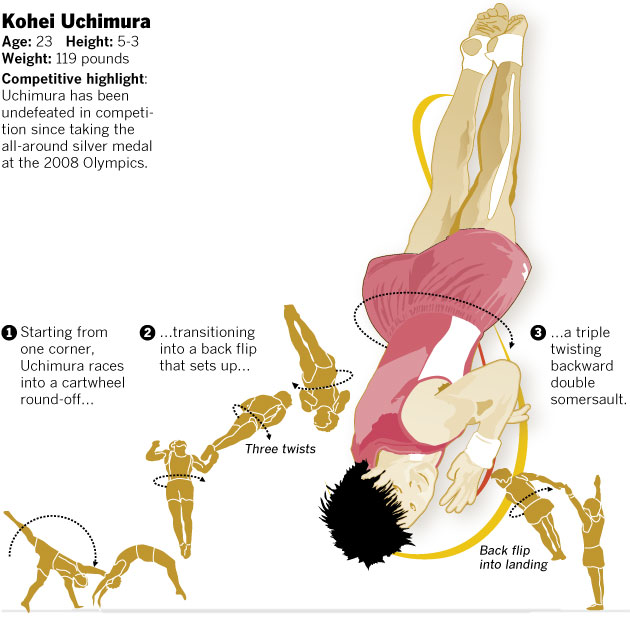Olympics: Athletes
A closer look at the events and key competitors:
Hope Solo: Protecting the goal
Usain Bolt: The fastest man on Earth
Kayla Harrison: A classic judo throw
Steffen Peters and Ravel: Fluidity on four legs
Miranda Leek: Up-and-coming archer
Mariel Zagunis: Third time isn’t a charm
Ryan Lochte’s backstroke technique
Michael Phelps kicks into history
Kohei Uchimura: Superman takes flight
Kim Rhode: Shooting straight toward a medal
Basics of skeet shooting
|
Solo regains her balance, staying low and square to the ball. |
If ball is played across the net, she makes a quick drop step. |
Shuffling her feet helps Solo reposition quickly. |
She stays low and balanced, with her hands in front. |
When a kick is made, she’s ready to react quickly. |
|
1-10 meters
Bolt has an unexceptional reaction time after the starting gun sounds. |
10-20 meters
His center of gravity is off balance during his drive forward, but he stays even with the other runners. |
20-60 meters
He usually starts to break away from others at 20 meters. He says the first 40 to 50 meters are his weakest. |
60-80 meters
Bolt reaches and maintains top speed of about 27 mph. |
80-100 meters
He decelerates slightly before the finish. |
|
Gripping the opponent’s right arm and left shoulder, Harrison pivots. |
Harrison sweeps her right leg back, lifts the opponent over her hip … |
… and throws her on her back for a winning score. |















